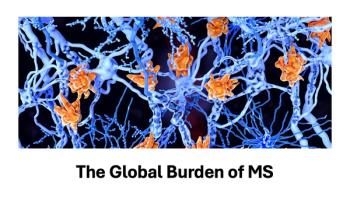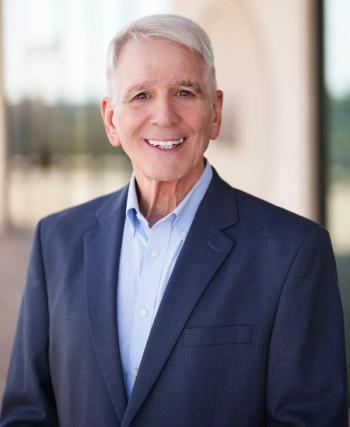
Pharmacists critical to success in 5 value-based models
At AMCP 2016, presenters identified five types of alternative payment models, and shared why pharmacists play a key role.
Michael Ellis, chief executive officer, Maxor National Pharmacy Services, and Fauzea Hussain, senior vice president, Avalere Health, delivered a conversational discussion on “Dimensions of Managing Specialty Drugs in Current and Evolving Alternative Payment Models” at the Academy of Managed Care & Specialty Pharmacy Annual Meeting 2016.
The presentation, held Wednesday April 20, outlined the paradigm shift in healthcare from volume to value, and highlighted a variety of alternative payment models. “Pharmacists will play a central role in this care payment and delivery shift,” Hussain said.
Hussain
“Alternative payments models have begun to transform healthcare payment into a ‘medical neighborhood’ and target specialty drugs for utilization management due to projected spend,” she said.
Hussain described unprecedented goals by the private and public sectors in migrating toward alternative payment models (APMs), including commitments by the Department of Health and Human Services to shift half of all Medicare fee-for-service payments to APMs and increase fee-for-service payments linked to value by 90% by 2018.
In addition, members of the Health Care Transformation Task Force, a group of providers, payers, purchasers and others, have committed to putting 75% of their business in APMs by 2020.
The pharmacist’s role in ACOs, PCMHs, and bundled models
The speakers outlined five key public sector APMs incentivizing care delivery changes: accountable care organizations (ACOs), patient-centered medical homes (PCMHs), bundled payments, medication therapy management (MTM) and value-based insurance design (VBID).
They recounted the goals of the first three models: improving quality while reducing spending; enabling the provision of comprehensive care; and maximizing efficiency within a bundle of care, respectively.
Hussain said there is an opportunity for pharmacist involvement in ACOs by quantifying medication offsets, notifying care providers when prescriptions are filled, implementing protocols to eliminate duplicate medications/polypharmacy and by participating in direct patient care.
PCMHs could engage pharmacists in medication synchronization, adherence and therapy management, she said. However, 66% of providers do not have pharmacy partners within their networks, according to the Pharmacy Benefit Management Institute.
Hussain said pharmacists could help drive the use of the highest value drugs in a bundled payment model, which is exploring coverage of cross provider services, such as those offered by hospitals and physicians for an episode of care.
The role of pharmacists in MTM and VBID
MTM and VBID offer more opportunities for pharmacists than the first three models. The enhanced MTM model to begin in January 2017, will provide selected Medicare prescription drug plans with incentives to improve compliance with medication protocols, reduce medication-related problems such as duplicative drugs, increase patients’ knowledge of their medications and improve communication among prescribers, pharmacists and patients.
The Enhanced MTM model is expected to allow for individualized and risk-stratified interventions, prospective payment for enhanced MTM interventions outside the MTM bid and performance payments if Medicare Parts A and B costs meet cost savings thresholds and reporting/quality requirements, the two speakers explained.
The Medicare VBID model, also set to start in January 2017, will waive or reduce costs for drugs and services that are considered to be effective for patients with chronic health conditions. The demonstration will test whether clinically nuanced VBID approaches increase enrollee satisfaction, improve clinical outcomes, reduce plan expenditures and provide savings for Medicare and its beneficiaries.
Ellis outlined barriers to pharmacists in APMs: lack of recognition as providers, limited interoperability with primary care physicians, lack of pharmacy service billing methods and a need to advocate for their value.
Management techniques that increase success
The speakers introduced two management techniques that could be adopted by APMs that accept more risk: clinical pathways and site-of-care optimization (SOC).
SOC is a utilization management strategy that seeks to lower costs for certain physician-administered or infused drugs by encouraging use of clinically appropriate, convenient, lower-cost sites or alternative settings of care.
Pathways, which are more prescriptive than clinical practice guidelines, often factor the cost of care into treatment decision making.
Ellis said that SOC affects stakeholders in different ways. For example, it could make it difficult for providers to retain patients and to maintain clinical autonomy; however, shifts in care sites could increase revenue for certain providers.
For payers, the success of SOC rests on having sufficient provider availability, provider market competition and plan market presence, while patients would need to have increased access to a shift in site and to their choice of providers, improved care and decreased cost sharing.
Clinical pathways could give providers an opportunity to meet quality improvement initiatives, better manage risk and increase shared savings but could lead to a loss of autonomy.
Payers using pathways could evaluate outcomes from a total cost perspective within a patient population, maintain cost savings from avoiding unnecessary care, improve provider performance and achieve quality targets.
While pathways might improve outcomes, they could interfere with patient treatment choices and might not result in lower costs.
Mari Edlin is a frequent contributor to Managed Healthcare Executive. She is based in Sonoma, California.
Newsletter
Get the latest industry news, event updates, and more from Managed healthcare Executive.






















































